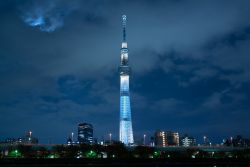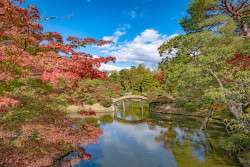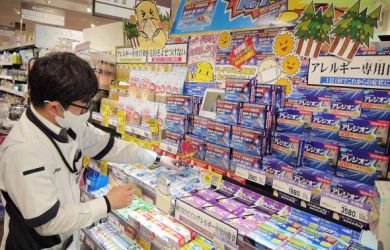
April 26, 2007
Madang’s Magic
Papua New Guinea’s heavenly climate and colorful mix of cultures illuminate the senses
By Metropolis
Originally published on metropolis.co.jp on April 2007

Photos by Itxaso Zuñiga
The smell of grilled fish and bananas makes its way through the market as smoke from the cooking fire dances along to island music from a nearby radio. Piles of sweet potatoes, betel nuts, coconuts, dried tobacco and bilum bags—multi-purpose sacks knitted in brightly colored patterns—are stacked against the fences. Down the road, a small motorboat drops off commuters from the many islands dotting the horizon, and a father-son duo set out in a small outrigger canoe looking for the day’s catch.
In Madang, there is a little bit of everything that Papua New Guinea (PNG), a Pacific Island nation that shares a border with Indonesia, has to offer. The city hugs a virgin coastline and is nestled at the foot of rugged mountain ranges, providing a cross-section of the country’s rich cultures. Its residents come from nearby islands, other seaside towns, the Sepik River region and mountain provinces. The area is also a diving and snorkeling haven, a sport fisherman’s dream, and a delight for bird-watchers and nature-lovers.

What attracted me during my month-long visit was the blend of easygoing tropical paradise and low-key city life. Having come to Madang from a Sepik River canoe trip and sleeping for several days in thatched houses erected on stilts, I was itching for a dose of the thriving market scene typically found in downtown areas. While several warehouse-size supermarkets surprised me with shelves filled with rice noodles, tikka masala sauce, havarti cheese and peanut butter, it was the open-air market that really captured my attention.
There, conversations in English or any number of the more than 800 languages sprinkling PNG’s landscape flowed easily between women wearing traditional meri blouses and shoppers maneuvering through the narrow aisles. They wore big smiles, revealing teeth stained with the fire-engine red remains of PNG’s favorite concoction of betel nut, mustard stick and lime powder.
A rainbow assortment of food sat on squares of tarp: green leafy vegetables, peanuts, papaya, pineapples, bananas, sago cakes, sausages and grilled mussels. At the far end, men showed off their pottery, woodcarvings, bags and baskets, and kids counted coins or waved palm leaves to keep the flies away. I could have stayed there all day, but a voice inside my head reminded me that there’s more to a place than the market scene. So I went exploring.

I wandered along the shady, frangipani-scented paths near fishing lagoons and watched the flying foxes swirl overhead or dangle from tree branches. The bats, which have a wingspan of about a meter and can weigh up to a couple of kilos, are evidently the largest flying mammals on Earth, at least according to my guidebook. I remember someone mentioning that inland, where protein-rich foods are severely lacking, people cast nets high above the ground to catch and eat them.
Offshore, more than 34 Japanese shipwrecks dating back to World War II, when PNG was a major military zone, have become popular dive sites and home to coral reefs, hammerhead sharks and multitudes of small fish. Anglers set out to nearby Karkar and Bagabag Islands with hopes of returning with sailfish, kingfish, tuna, mackerel, barracuda, marlin or yellow fin. Along the South Coast Road about 20 minutes away is the Balek Wildlife Nature Habitat, where the movie Robinson Crusoe, starring Pierce Brosnan, was filmed. Pictures of sulfurous caves, jungle walks and hot springs made me pull out my notebook and jot down the name for future reference.
Madang is also a good jumping off point for longer-haul trips to the neighboring Sepik Province, Milne Bay or the mountains, and a handful of operators can arrange tours. Time, though, was running short, and I only had a few days left. I set back out and resumed my leisurely half-city, half-beach pace. I strolled by the Madang Country Club and its nine-hole golf course lined with mango trees and water lily ponds. Further up the street was the Coastwatcher’s Memorial. Although the 30m concrete beacon is not a particularly striking tourist attraction, the sea views made the walk worthwhile.
I passed through the Krangket Women’s Fish Market, located at the entranceway of the luxurious Madang Resort, and bought a piece of freshly grilled fish displayed on banana leaves—then made my way down to a small grove of coconut trees behind the resort to watch the tropical sunset.
In the “Land of the Unexpected,” as locals call their country, there are surprises around every corner. Madang’s magical surprise lies in its diversity, along the aisles of its markets and under the spell of a frangipani-perfumed paradise.
Air Niugini (www.air-niugini.co.jp) flies from Narita to the country’s capital, Port Moresby, on Saturdays and offers connecting service to Madang. For accommodation, check out the high-end Madang Resort (www.madangresort.com), or for those on a budget, the Lutheran Guesthouse (+675 852 2589) provides clean, no-frills rooms. The Madang Visitors & Cultural Bureau (+675 852 3302, www.madangtourism.com), in addition to providing information on tours and accommodations, houses a museum filled with local artifacts and resembles a miniature version of “spirit houses” found in the Sepik and coastal regions. Melanesian Tourist Services Limited (www.mtspng.com), housed at the Madang Resort, is one of PNG’s largest tour operators; they can arrange tours around Madang, as well as to Milne Bay, the Highlands and the Sepik. Also, Toshi Narita (toshi_narita@nifty.com) of Narita Trading Ltd. can help coordinate local tours, accommodation and activities.
[geo_mashup_map]







